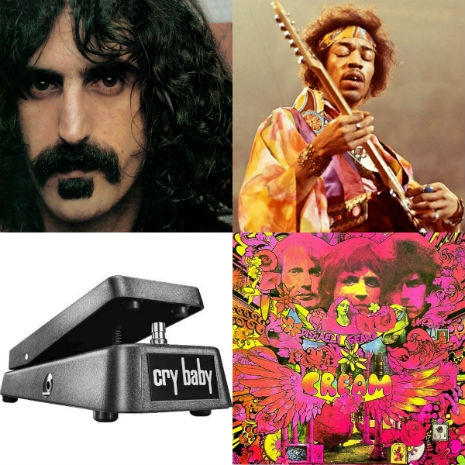
The wah-wah guitar effect pedal makes a “cry baby” sound by filtering the electronic frequencies up and down controlled by the players foot. The first one was put on the market in 1967 by Warwick Electronics Inc./Thomas Organ Company, the somewhat accidental creation of Brad Plunkett, a junior electronics engineer at the company. Plunkett’s prototype used a volume pedal from a Vox Continental Organ and a transistorized mid-range booster, but his original goal had only been to switch from a finicky tube to a much cheaper, easier to use piece of solid state circuitry. (Chet Atkins had designed a somewhat similar device in the late 1950s, which you can hear on his “Hot Toddy” and “Slinkey” singles)
Almost immediately the Cry Baby wah-wah pedal was adopted by the most famous guitar slingers in rock. One of the first was Eric Clapton, who used the effect to great effect in “Tales of Brave Ulysses.” Frank Zappa was a huge fan of the effect and is said to have introduced Jimi Hendrix to the Cry Baby who used it on “Burning of the Midnight Lamp” and quite a bit after that. One of the most famous uses of the wah-wah pedal’s “wacka-wacka” effect is heard on Isaac Hayes’ “Theme from Shaft.”
In Joey Tosi and Max Baloian’s documentary Cry Baby: The Pedal That Rocks The World, the filmmakers explore the influence of the wah-wah pedal on popular music, talking to inventor Brad Plunkett, longtime Rolling Stone contributor Ben Fong-Torres, Eddie Van Halen, Slash, Buddy Guy, Art Thompson, Hendrix engineer Eddie Kramer, Metallica’s Kirk Hammett, Dweezil Zappa and Jim Dunlop, a man whose name is synonymous with the production of musical effects devices.